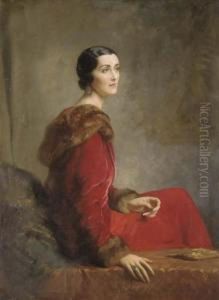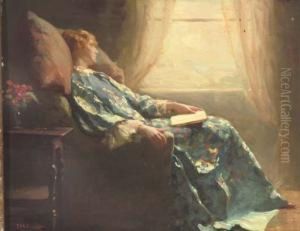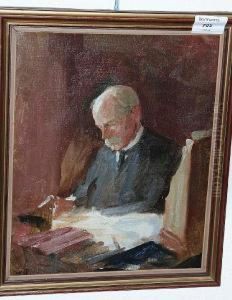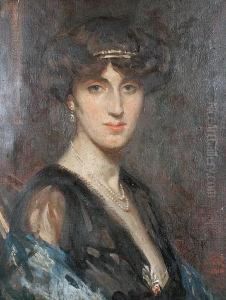Thomas Martine Ronaldson Paintings
Thomas Martine Ronaldson was a British artist whose life and career spanned the turn of the 20th century, a period noted for significant changes in the arts across Europe. Born in 1881, Ronaldson was part of a generation of artists who were exploring new avenues of expression and breaking away from the strictures of Victorian artistic conventions. His work, though not as widely recognized as some of his contemporaries, contributed to the evolving landscape of British art during a time of social and technological upheaval.
Ronaldson's early life was marked by a deep appreciation for the arts, fostered by an environment that valued creativity and intellectual pursuits. He received his formal art education at the Royal Academy Schools, a prestigious institution that provided him with the technical skills and exposure to the broader artistic community in London. During his time at the Academy, Ronaldson was influenced by the Pre-Raphaelites, whose emphasis on detail, vivid colors, and complex compositions would leave a lasting imprint on his own style.
As he developed his artistic voice, Ronaldson began to experiment with themes of nature and the human condition, often blending realism with a sense of romanticism. His paintings frequently depicted serene landscapes and intimate portraits, characterized by a delicate use of light and shadow. Despite the quality of his work, Ronaldson often struggled with the commercial aspects of being an artist, navigating the challenges of selling art in a market that was increasingly looking towards modernist expressions as the new vanguard.
Throughout his career, Ronaldson exhibited at various galleries and shows, including the Royal Academy of Arts exhibitions, where he gained some recognition among art critics and patrons. However, his reluctance to fully embrace the emerging trends of modernism meant that he remained on the periphery of the major movements that defined British art in the early 20th century.
Ronaldson's contribution to art was not limited to his own creations. He was also an active member of the artistic community, participating in discussions and groups that sought to define the role of art in a rapidly changing society. Despite the challenges he faced, Ronaldson remained committed to his vision, producing a body of work that reflected his deep love for the natural world and his keen observation of human emotion.
Thomas Martine Ronaldson passed away in 1942, leaving behind a legacy that, while not as prominent as some of his peers, represents an important facet of British art history. His works continue to be appreciated by those who seek to understand the nuanced transitions within the art world during the late 19th and early 20th centuries. Ronaldson's life and art exemplify the journey of an artist navigating the complexities of creativity, expression, and recognition in a time of great change.



